The history of Japanese travel that everyone is crazy about but may not know | Hokkaido (1): Perry Black Ship Beihang and Hakokan in 1854
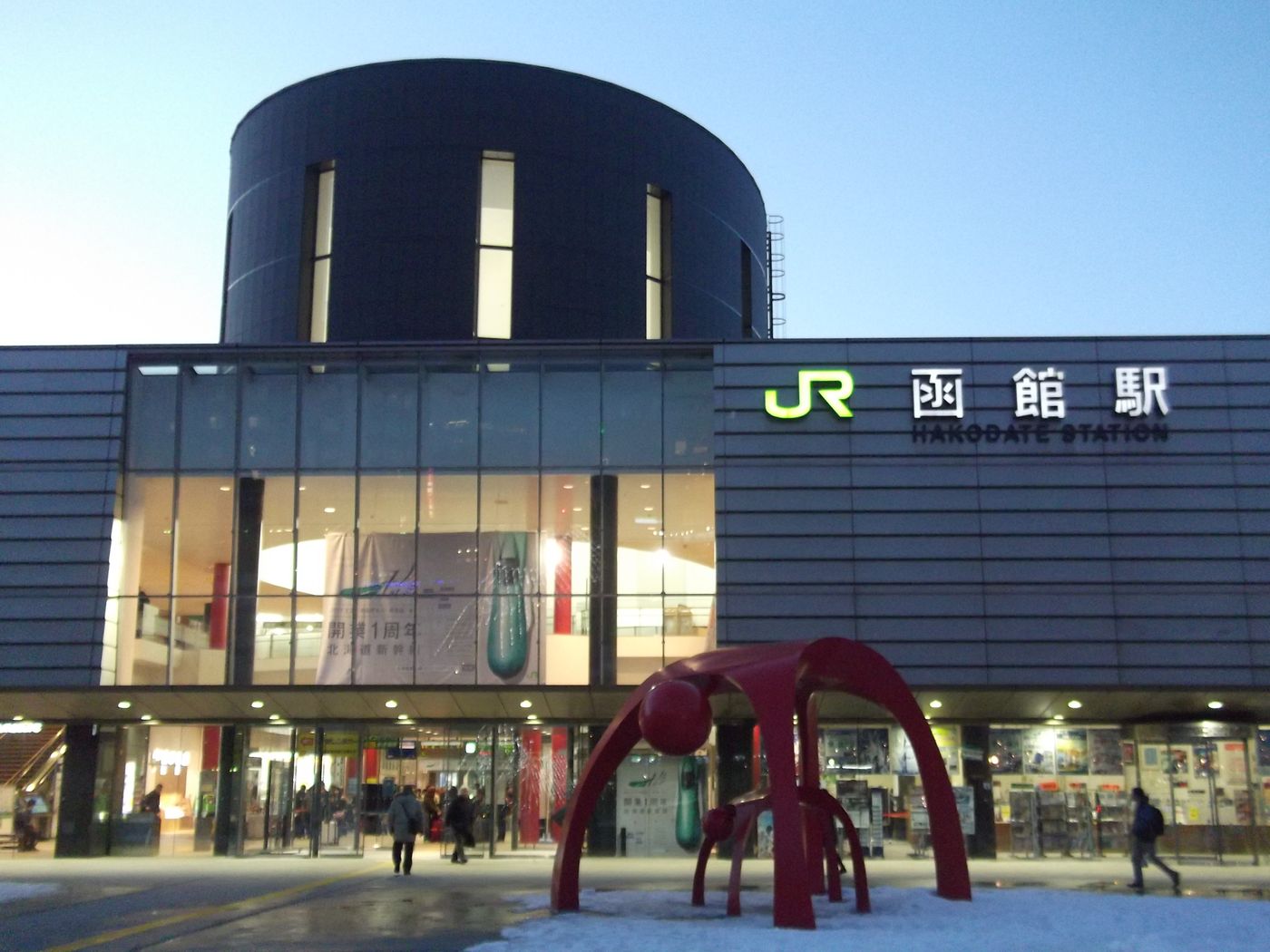
May 1854, Ezo Land, Hakodate.
Five black ships led by Admiral Perry of the U.S. Navy sailed into Hakodate Harbor one after another and set up the "Okinoguchi Bansho", which anchored on the coast not far from the present-day Hakodate City Den-Omachi Station. The Matsumae domain, who was in charge of Hakodate at that time, used this to inspect passengers and goods by sea and collect taxes at the entrance.
The U.S. military fleet, commonly known as the "black ship", was not the first foreign ship to enter the port at Hakodate. In 1793, Adam Laxman was ordered by the Russian Emperor Catherine II to return the drifters such as Kotao Oguroya and other drifters to return to Japan, and he once stopped at the Hakodate.
Before Beihang Ezo, Perry had just signed the Japan-US Peace Treaty with the shogunate in Shimoda, Kanagawa. As promised, Hakodate will open foreign ships (especially American whaling ships) to the port for refueling, food and maintenance in the following year.
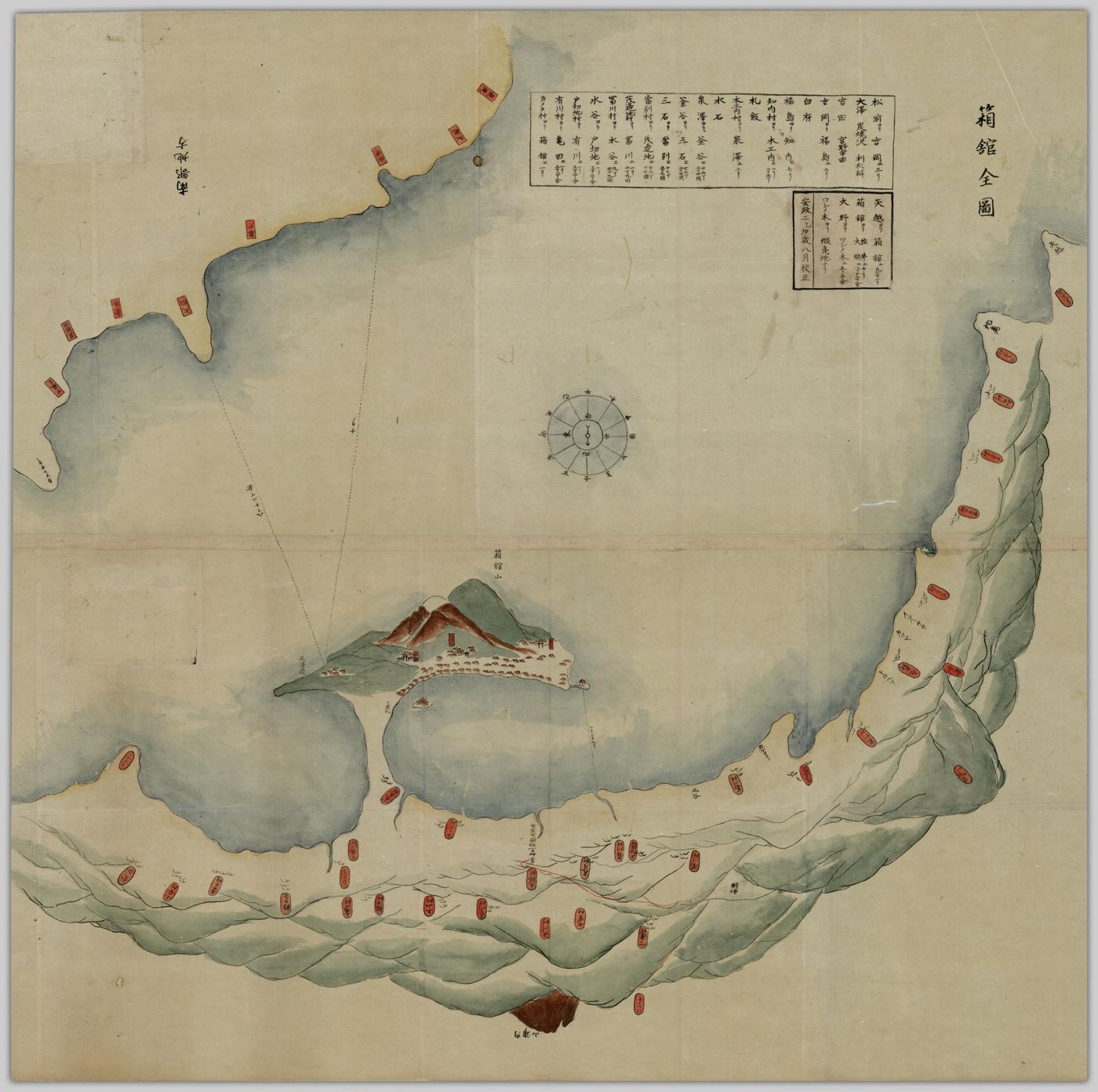
In fact, Matsumae was the northern port that the United States intended to open, and Hakodate replaced Matsumae as a "small port", and with the signing of the Ansei Five-King Peace Treaty a few years later, the process of officially becoming an international port was actually the first day. The result of a compromise between the United States and the United States.
Through Nippon (Nippon) written by Philipp Franz von Siebold, a foreign doctor who was a former Dutch merchant in Nagasaki, and Vasily Mikhailovich Golovnin, a Russian navy officer who had been detained in Matsumae In his "Memoirs of a Captivity in Japan", Perry learned that if Hakodate was used as a relay port for American whaling in the North Pacific, it would be as good as Songqian in terms of geographical situation and convenience.
However, the description on the paper is the description. Perry still wants to go to the Hakodate to observe on the spot to further confirm whether the northernmost port in Japan obtained by the United States is a place with a high CP value. So, after the conclusion of the contract, the fleet immediately went north to Hakodate.
Five black ships departed from Shimoda in batches and entered Hakodate Bay on May 11 and 17. JW Spalding, the officer in charge of assisting Perry's paperwork, mentioned in The Japan Expedition: Japan and around the world:
The temperature you felt when you arrived at Hakodate was very different from when you left Shimoda. The latitude difference between the two places is about seven degrees, and the surrounding peaks are still covered with snow. With thick boots and a coat, the air here is pleasant and pleasant.
Perry hired a Cantonese named Lawson, and followed him to Japan as a translator of Chinese written talks. In Lawson's "Japanese Diary", he also mentioned the snow-covered top of the mountain in May. It can be said that the scenery and temperature are completely different from Shimoda. It is the first impression of the Kurofune tour group that first arrived at Hakodate.
After Hakodate landed, Perry and other U.S. military generals negotiated repeatedly with the Makuten and Matsumae clan elders sent by Edo, in the mansion of the Hakodate wealthy merchant Yamadaya Shoubei, on various matters after the opening of the port.
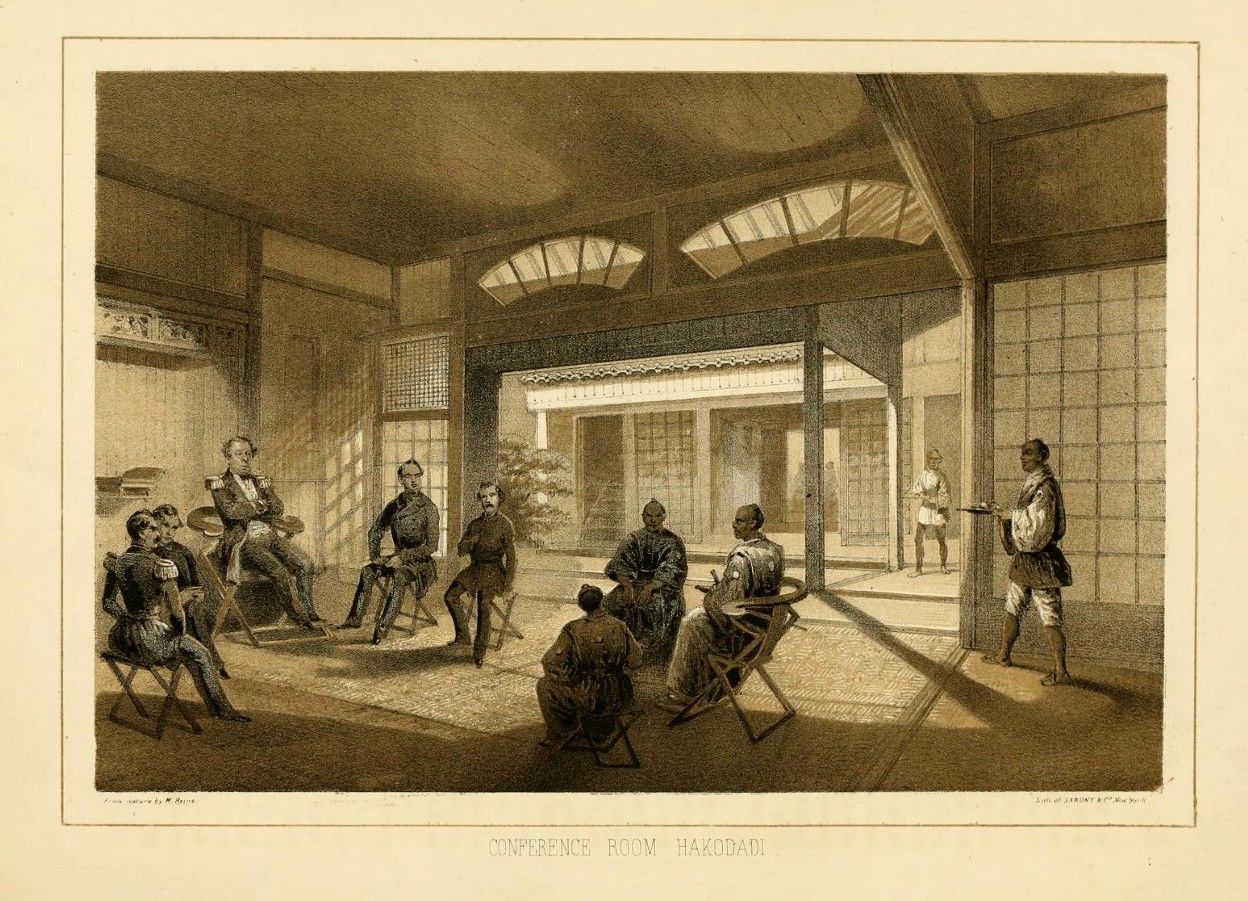
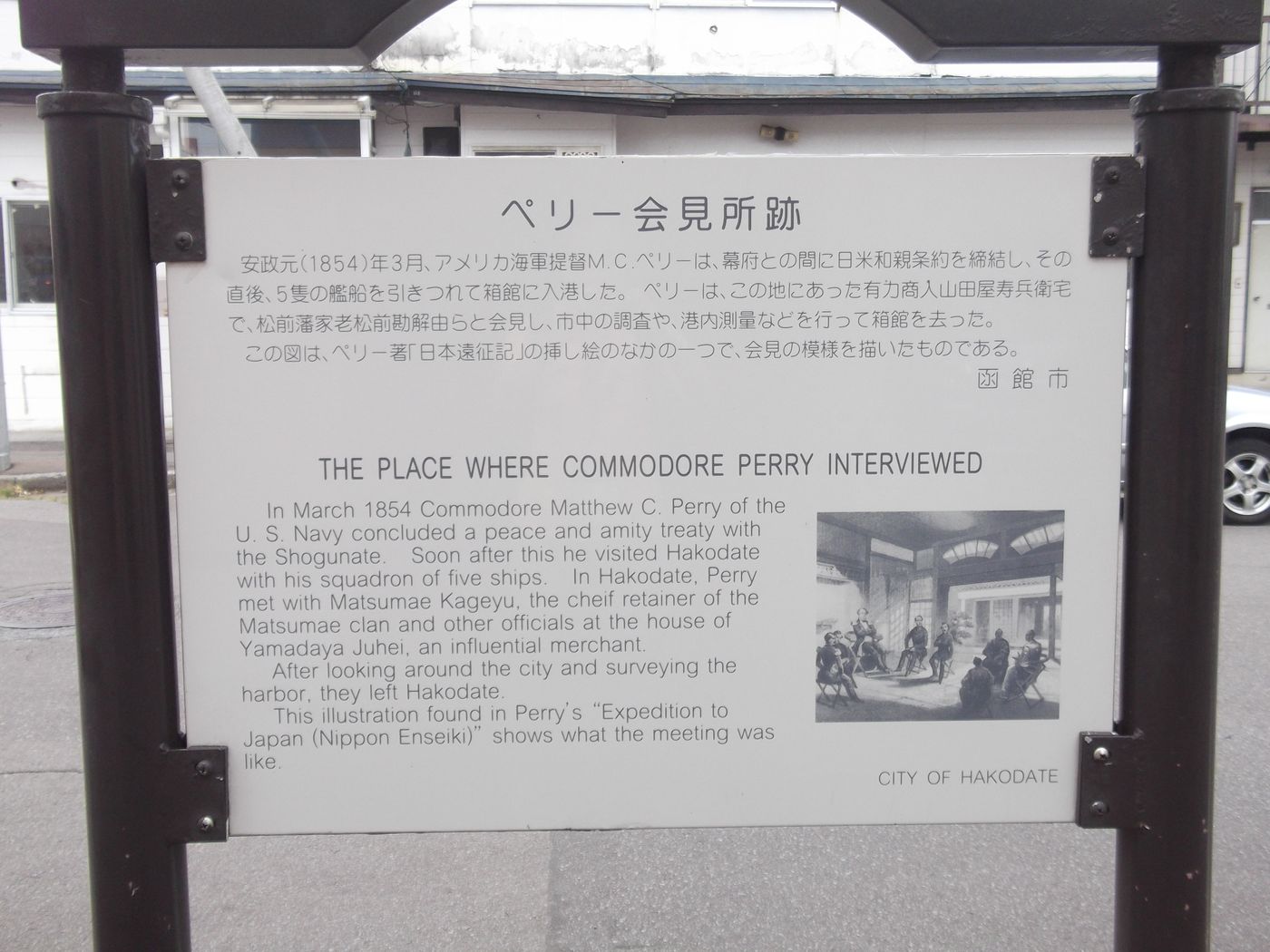
At the same time, Perry also led the crowd to Hakodate Mountain, which was called "Wo Niu Mountain" at that time. Today's Hakodate Mountain, as a sacred place for lovers, is a very recent event with the double-C million night scene embellished with countless lights. Perry's mountaineering trip was to first have a panoramic survey of the situation and structure of Hakodate Bay, so as to start the exploration work of the harbor one by one.
Many of Perry's generals have the experience of cruising the world with warships, surveying the fortresses and situations in various bays, and visiting Hakodate for the first time, it is inevitable to compare the harbors they have visited. These "old drivers" Xian believe that Hakodate Bay is very similar to Gibraltar Harbour at the southern tip of the Iberian Peninsula.
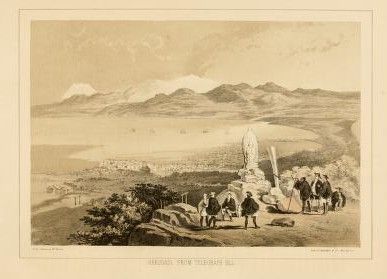
With its curved coast and majestic Hakodate, ships can easily enter the port and berth safely, which is an advantage that other ports cannot match. If American whaling ships, after passing through the violent Sea of Okhotsk or the Sea of Japan, use this place as a relay or a safe haven to replenish equipment and supplies, and then go to the Sandwich Islands (now Hawaii), there will be no need to worry about the shortage of fuel and grass. question.
The U.S. military generals are generally optimistic about Hakodate, which is a natural harbor with great prospects/money in the future. In addition, the landscape of the fishing village on the shore also left them with an impression quite similar to the small fishing port in Spain. As for Perry himself, he also gave Hakodate the evaluation of "the most beautiful and safest seaport in the world".
Perry also ordered one of the black ships to go to Spitfire Bay to conduct an offshore survey of what is now the port of Muroran. In addition to the Wangan tour, the Perry tour group also asked the Shogunate and the Matsumae Domain for city tours and shopping for local products.
Today, the most central area of Hakodate City, namely Hakodate Station, the bus center and the surrounding area of Hakodate morning market, is a key area where tourists eat and buy, and connect with crowds of people. In other words, this is the city center that gradually developed after the extension of the Hokkaido railway line and the opening of the Seikan liaison ship in the early 20th century.
In 1854, when Kurofune visited the box, the center of Hakodate was around the Omachi and Hakodate Hakodate stations at the western end of the streetcar line. Today, Koryuji Temple, Jingxuan Temple, Mingming Temple and Shiji Temple, which are located higher on the Saka Road, were all located in this area at that time, that is, the old temple town area.
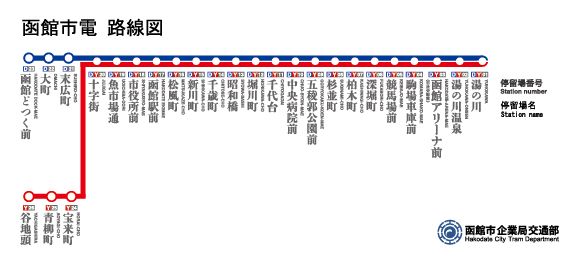
During the half-month stay in Hakodate, the activities of Perry and the US military on the shore were mostly around the old temple town.
With the assistance of the officials of the Matsumae domain, the US military found the resting place behind the two sailors who died of illness. From the former site of Koryuji Temple, walk up the Saka Road (now Uomizaka), arrive at the mountain back moor (やませどまり) at the northwest end of Hakodate, and hold the funeral of the same robe. When the U.S. military and the funeral procession of the Matsumae domain marched, local residents who had never seen a large number of blond foreigners, all raised their necks to watch.

Samuel Wells Williams, a famous Chinese-American missionary and sinologist, was also one of Perry's translators on this trip to Japan. During his stay, Wei Sanwei was often accompanied by officers who were close friends and walked around the sailor cemetery. At that time, there were various pine forests, bamboo forests and other vegetation nearby. Wei Sanwei also noticed that the rich and diverse algae along the coast were an important source of food for the residents.
As Hakodate became an international port, it was urgent to settle the residence of foreigners. By the 1870s, it was officially planned as a cemetery area for foreigners.

The aforementioned temples in the old Teramachi area, as well as the Hachiman Shrine in present-day Motomachi (later renamed Hakodate Hachiman-gu Shrine, which was moved to its current location in the valley in the 1920s), also became the objects of sightseeing during the period of Kurofune’s visit to the box. When visiting these monasteries, I did not have much pilgrimage mentality, but set up various foreign affairs units here for the United States to find temporary residence and office locations.
For example, Perry's photography team once stayed in the temple; the trade officials dispatched by the United States to Hakokan also used Jingxuan Temple as a temporary residence; after it became an international port opening, the name temple once Rented to the United Kingdom as a consulate, Gaolong Temple has also hosted members of the Russian consulate.
Wei Sanwei, who accompanied the U.S. military to visit temples and shrines everywhere, in his travel notes, once praised the carvings, statues and buildings of these Buddhist temples for their exquisite structure and decoration, and the Japanese-style cemeteries in the temples. Refers to the dupha), and the prayer items, present a strange and grotesque style, but he thinks it represents the local people's enthusiasm for religion.
These observations of Wei Sanwei inevitably lead to a misunderstanding of the architectural style of pagan temples as a Christian. For example, he believes that the reason why the Gaolong Temple is named "Gaolong" may be because the high point of the porch is engraved with the double dragon. reason.
At first, Matsumae Domain learned from the Edo side that Perry's fleet had headed north. In order to avoid the possibility of looting money and food and coveting women's beauty after the US military landed, he had already issued an order to the residents to restrict business operations during the black ship's stay. Go out with women and children, and suspend the prohibition of visiting and doing things in temples and communes.
The old beauty saw that the door was closed, the streets were sparsely populated, and even women and children disappeared, and the whole person felt a black question mark. Chinese translator Rosen even wrote in the "Japanese Diary" that "Women are ashamed to see foreigners, stay in the boudoir, and do not show up." 's narrative. Only later did the United States find out that this was a deliberate arrangement made by Song Qianfan in order to maintain stability. In fact, they didn't come here with the intention of attacking other people's villages.
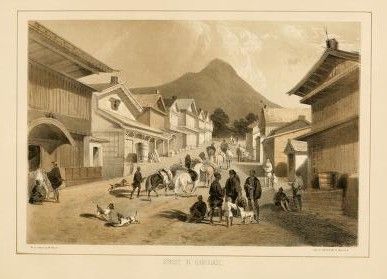
However, Perry's two accompanying translators, Lawson and Wei Sanwei, also noticed that Hakodate's folk customs are very different from Shimoda's one highlight. In his travel journal, Rosen once commented that Hakodate was a "background" place, and he had a positive impression of the local clothing and people, which was upright and prosperous in Shimoda. Wei Sanwei pointed out more clearly that compared with the common people in Shimoda, men are always naked, women are loosely dressed, and the common people in Hakodate dress more appropriately.
Although the black ship tour group was very impressed by the latitude and climate of Hakodate, which was different from Shimoda, they did not realize the degree of coverage of the residents' clothes. It was also because of the climate here. It is regarded as a symbol of moral integrity.
Due to the limited procurement, it was difficult to understand the situation of local commercial and trade products. Perry proposed to Matsuzaki that direct transactions between Hakodate merchants and U.S. military subordinates should be opened.
It's just that the two sides have just negotiated the exchange rate of the currency, and the US military has caused trouble. They enter temples to gamble without authorization; they don’t pay for things they take from merchants, or pay at will without asking the price, and throw them away when paying; they even climb over walls without authorization to enter and leave government buildings; they don’t take off their shoes when they enter the room. All of these are completely confusing behaviors for the Japanese side.
Originally, he had some scruples about Perry's subordinates shopping freely in the streets. Since these old beauties have become disqualified travelers, Matsumae fan has made a serious protest to Perry, and there is also a reason to prohibit the American side from shopping at will. Based on not violating the peace treaty, Matsumae domain changed to Okinoguchi and set up a temporary trading market for this group of foreign nuts, which not only provided military food supplies, but also satisfied personal shopping desires.
How good is the box hall more than 100 years ago for these old beauties? According to the records in "The Anchorage in the Anchorage of the Moriga Ship Box in the First Year of Anzheng", this group of tourists purchased a large number of clothing fabrics, chopsticks, lunch boxes, tea bowls, lacquer ware, cigarette pipes, tobacco, inkstone, fan, umbrella, Razors, luggage (willow luggage), etc., there are dozens of handmade souvenirs in total.
In addition, from the aforementioned JW Spalding's "Expeditions", it is also recorded that the US military caught a large number of high-quality salmon on their own when they inspected the harbor. No need to change the name, no need to patronize Sushiro, Hokkaido's salmon can be caught casually, so how can you let it go.
It seems that the first 18-day experience of the black ship tour group's Hakodate, in addition to the port inspection, also has explosive purchases and sea fishing, and did not disappoint this group of tourists. Since the end of the Tokugawa period and the Meiji era, the history of foreigners' travel in Hokkaido has begun.
- Appreciate Citizen 2.0 Subscription Sponsorship: https://liker.land/cathytsai/civic
- Buddhist fans who don't work hard: https://www.facebook.com/travelhistorystory
- If you want to cooperate, you can come to me here: misiaa2001@gmail.com
Like my work? Don't forget to support and clap, let me know that you are with me on the road of creation. Keep this enthusiasm together!








- Author
- More